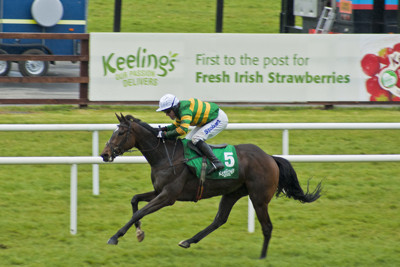
Credit: Celtic Prints / BigStock.com
Here you’ll find a guide to all of the racecourses in Ireland along with a map of their location. We’ve included courses from both the Republic of Ireland as well as Northern Ireland here, with the Northern Irish courses are also covered on our UK racecourses page.
Map of all Racecourses in Ireland
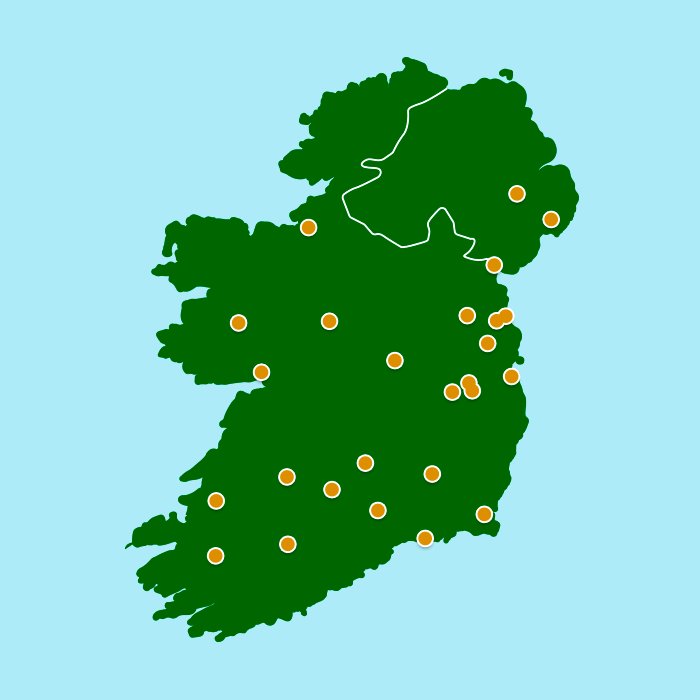
Course Index
A to Z of Irish Racecourses
Ballinrobe
Ballinrobe, Co. Mayo, Ireland | Website

Ballinrobe might be one the smaller tracks in Ireland, but it’s full of character and is a course that is well attended, especially by the locals. The course is located in County Mayo, which is on the West Coast of the country. As you would expect this part of the world offers some of the most stunning landscape in Europe, with the course taking full advantage of the rolling hills and wooded areas that are scattered around, creating an natural amphitheater.
The track is on the small side, measuring just over a mile, but they are able to offer both National hunt and flat racing at Ballinrobe. The course has become fairly iconic with evening meetings throughout the summer and is only open between April and September to take advantage of the better weather.
There have been calls to expand the layout of the track and the facilities on offer in order to create a bigger attraction for people coming into the county. But, locals have been fairly wary of this and are keen to not lose the charm and the current stature that the course has within the Irish racing community. However, there have been recent issues with the track of late and with it the powers that be from within Ballinrobe racecourse are likely going to have to see some sort of improvement in order to keep the few race meetings that they are currently able to host.
Bellewstown
Collierstown, Co. Meath, Ireland | Website
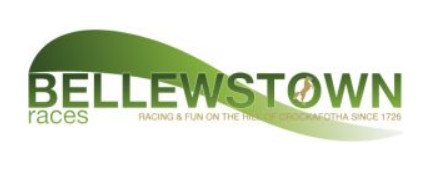
Bellewstown is a small village that is situated about 8 miles south of Drogheda. The racecourse is able to offer both flat and National Hunt racing throughout the year and is another popular track with punters and visitors from all over Ireland.
Given that the site is just 30 or miles north of Dublin, it often gets huge crowds from people travelling out of the city as they chase a slightly slower pace of life. Whilst meetings are held throughout the year the two main festivals are held in the first week of July and the last week of August.
Racing has held a strong tradition at the site and whilst it’s not totally certain when the first meeting at Bellewstown took place, it is thought that there has been some form of racing there since 1726. The story goes that George Tandy, a former Mayor of Drogheda, had persuaded the then King George III to invest £100 into a race on the site. The King obliged and the rest as they say is history.
The track may seem like a sleepy sort of Irish racecourse, but in fact, Bellewstown play host to one of the biggest betting coups’ in British and Irish Racing history. The story goes that Barney Curly, a professional gambler, got wind of a horse running that was massively under-handicapped. He managed to get on with several online bookmakers as they were unable to get in contact with the track at the time, before hitting the jackpot with wins that would be around the €1.7million in today’s money. The horse, Yellow Sam, is now one of the most infamous horses in the country’s racing history.
Clonmel
Powerstown Park, Powerstown, Clonmel, Co. Tipperary, Ireland | Website

Racing at Clonmel has been hosted for over 150 years, which makes it one of Ireland’s most well-known racecourse in the country. Based in County Tipperary towards the South of Ireland, the course offers a seriously tough test for horses as they work around the one and a quarter mile layout.
What makes the track so tough and why it’s set apart from that of a lot of racecourses in Ireland is the fact that it’s so undulating. Horses head down into a dip just 3 furlongs from home before having to haul themselves up a huge bank to get over the start finish line. It’s a course that is often suited to horses and jockeys who have prior experience at the track, knowing just when to push the horse and how far from home.
Whilst the course does include both National Hunt and Flat racing throughout the year, the two meetings in November and February are probably the biggest for the Clonmel racecourse, both being that of National Hunt meetings.
Throughout the meetings are three notable races that comes in the form of the Mercedes-Benz Novices Hurdle, Clonmel Oil Chase and the T.A. Morris Memorial Mares Chase. The Clonmel Oil Chase is the highest ranked of the three, currently sitting as a Grade 2 race and comes with a purse of €50,000. Famous jockeys that have won the race include Ruby Walsh, Barry Geraghty, Paul Carberry, Davy Russell and Richard Dunwoody, to name just a few. The T.A. Morris Memorial Mares chase has been upgraded from Listed to Grade 3 in 2009 and even though it’s only been running since 2004, is widely tipped to see an upgrade again, given the calibre of horses and winners that it’s produced.
Cork
Killarney Road, Mallow, Co. Cork, Ireland | Website
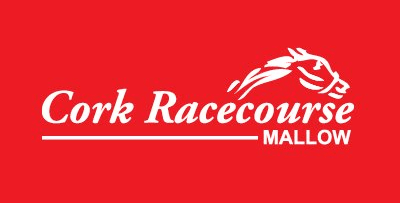
Cork is one of the biggest and most iconic tracks in the country. It’s based in Mallow, which is situated in County Cork, found in the far south of the country. The course is able to host both national Hunt and flat racing, which means it’s open throughout the year and has a plethora of meetings as a result. Another advantage that the track has is that it’s stated just 35km from Cork and 65km from Limerick, two of the biggest cities in Ireland, which allows for a large catchment area of fans, something that many racecourses struggle with.
The track is one and a half miles in length, which means it’s one of the longer ones. There is chute towards the end of the home straight that allows for longer, straight flat race,s measuring up to 6 furlongs in total length. The track is actually pretty flat, although they do run right-handed around it which isn’t all that common.
Cork is able to host some quality forms of racing right throughout the year. The big meets for National Hunt come in November and December and with it include races such as the Cork EBF Novice hurdle, Cork EBF Novice Chase, Lombardstown Mares Novices Chase, Hilly Way Chase and the Cork Stayers Novice Hurdle.
All of these races are Grade 3, apart from that of the Hilly Way Chase which is Grade 2 and undoubtedly the biggest race of the 5. In fact, Hilly Way Chase has had some amazing winners over the years, including the likes of Douvan, Un de Sceaux and Beef or Salmon. Willie Mullins has trained no fewer than 9 winners in the race, which is amazing given that it’s only been running since 2001.
Curragh
Newbridge, Co. Kildare, R56 RR67, Ireland | Website

Curragh racecourse is set in Newbridge, County Kildare which is towards the east of the country, around 100 miles south of Dublin. The setting of the course is simply stunning and with it offers some of the most amazing photographs with the rolling hills in the background, contrasting with the large grandstands within the meeting itself.
The racecourse is without doubt Ireland’s shining light and is able to offer all five of the Irish Classics that are run each year, plus an additional 6 Group 1 races on top of that as well. The course only includes flat racing and is open from March through to September, closing for racing throughout the winter months.
It’s all about the high calibre racing at Curragh and the 5 Group 1 races are that of the Irish 1,000 Guineas, Irish 2,000 Guineas, Irish Derby, Irish Oaks and the Irish St Leger. Whilst each of these races are vitally important in the world of racing, let alone simply in Ireland, the standout race has to be that of the Irish Derby, which has been running since 1866 and comes with a massive purse of €1.5million, making it the richest horse race in the country. The race has been dominated by Irish trainer Aiden O’Brien who’s won it on 12 occasions, with leading owner that of Michael Tabor, who’s won with 13 different horses from 1997 through to 2017.
It’s crazy to think that the course has 6 other Group 1 races that are so overshadowed by the big five, but such is the standard of racing at Curragh. The other Group1 races include the Tattersalls Gold Cup, Pretty Polly Stakes, Phoenix Stakes, Moyglare Stud and the Vincent O’Brien National Stakes. All race has a purse of €250,000+.
Down Royal
Gravelhill Rd, Lisburn BT27 5RW | Website
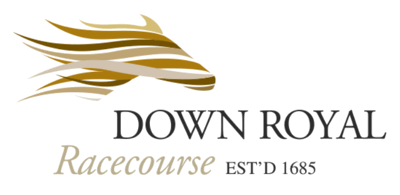
Down Royal is a racecourse that is based in Northern Ireland. Given that Northern Ireland is technically based in the UK, it would usually be governed by that of British Horseracing Authority, but as an agreement that has been set up, these courses are based on a Great Britain/ All-Ireland basis, meaning that it’s actually under the authority of the Horse Racing Ireland company instead.
The land has seen racing take part from as early as 1685, but the current track has been running since the early 18th Century. It was started when King James II was able to issue a Royal Charter and with it donate up to £100 for certain races that took part there.
Down Royal is now one of the biggest and popular tracks in Northern Ireland. It’s located just outside of Lisburn, which isn’t far from Belfast, meaning that they actually have quite a large catchment area for racing at the track.
They are able to offer both flat and National Hunt Racing at the track, which means it’s open to racing all year round. In terms of flat racing, the biggest race comes in June and is the Ulster Derby. The race comes with a purse of €100,000 and is raced over 1m 4f.
But, the highlight of the season takes place in November when the racing of the JNwine.com Champion Chase takes place. The race is a Group 1 race that has a purse of €140,000 and has some iconic horses to have won it previously, including Don Cossack, Beef or Salmon and of course, the legendary Kauto Star, who won on two occasions in 2004 and 2006.
Downpatrick
24 Ballydugan Rd, Downpatrick BT30 6TE | Website

Downpatrick is one of just two racecourses in Northern Ireland, with the other being that of Down Royal. It’s probably fair to say that it plays second fiddle to that of Down Royal but is still a very popular track with both locals and tourists, especially given that there are so few racecourses in Northern Ireland.
The course is located just a few miles south of Belfast in the town of Downpatrick. The town is actually a stunning place to go visit and has its own cathedral. Again, like Down Royal, the course is governed by that of Horse Racing Ireland, instead of the British Horseracing Authority, given their agreement with the Ireland/ Great Britain split.
Racing was first held at the location in 1685 and with it has been a stable part of the community ever since. They are able to offer National Hunt racing at the track with no flat racing taking part, but they are open to meetings all year round of different degrees of importance.
One of the feature races that takes part at Downpatrick is that of the Ulster National Handicap Chase, which is run over a distance of 3m and 4 furlongs. The race, given its length and difficulty, is often a good starting point for horses that might be considered for bigger races, such as the Grand National and the Scottish Grand National. The course is one of the tougher ones for horses, so often provides a good yard-stick as to what might go well in these other races.
Dundalk Stadium
Racecourse Rd, Dowdallshill, Dundalk, Co. Louth, A91 FFP3, Ireland | Website
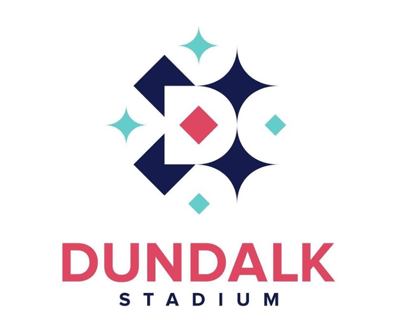
Dundalk Stadium is very unique in that it’s one of very few in Ireland or Great Britain to be able to offer both horse racing and greyhound racing within the same stadium. It’s only been open since 2003 as a greyhound track and developments to include a €24million horse racing faciality as well were completed in 2007, making it one of the newest locations for horse racing in Ireland.
The course is located in Dundalk, which is almost right in between that of Dublin and Belfast. There are great transport routes from both cities, which makes it a haven for people wanting to get out of the city and away for a couple of days racing. The track that was installed is an all-weather track, taking advantage of the Polytrack surface. The course is 1 ¼ mile in total length, which makes it fairly compact, but long enough to not have to lap the circuit twice for most flat races, which is now exclusively run given the closure of the National Hunt turf track in 2001.
There are two standout races that take race each year and these come in the form of the Patton Stakes and the Diamond Stakes. The Diamond Stakes is probably the bigger of the three and is a Group 3 race that comes with an impressive purse of €63,000. Winners of this race have included the likes of Mastercraftsmen, Declaration of Wat and Parish Hall. Leading trainer in the race is Aidan O’Brien, who has won it on 7 occasions with 7 different horses.
Fairyhouse
Ballybin, Co. Meath, Ireland | Website
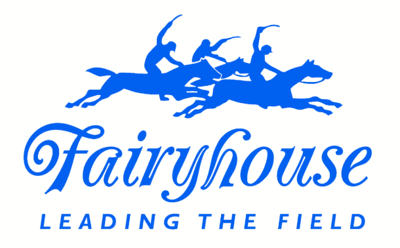
Fairyhouse is one of the biggest and most notable racecourses in Ireland. It’s been the scne of racing since 1848 and with it has been able to host a number of top-quality races, including no fewer than 5 Group 1 races that take place at the courses each year. But, the site is more than just racecourse as it’s been known to host everything from concerts to music festivals and based in the town of Ratoath, means it’s not too far from Dublin for great transport links.
The track is all about the racing that takes place and arguably the biggest race of the year comes in the form of the Irish Grand National. The race is one of the biggest in the country and comes with a massive purse of €500,000. Probably the most iconic winner of the race was the legendary Desert Orchid, who won it in 1990 under jockey Richard Dunwoody.
The course is able to host 5 Group 1 races in total, which include the Powers Gold cup, Mares Novice Hurdle Championship Final, Royal Bond Novice Hurdle, Hatton’s Grace Hurdle and the Drinmore Novice Chase. All of the races have massive importance for Irish horseracing and with it have some of the biggest purses to boot. Notable winners of the races include the likes of Annie Power, Istabraq, Hurricane Fly, Jezki, Limestone Lad and Don Cossack, highlighting the calibre of winners from the race.
Galway
Ballybrit, Galway, H91 V654, Ireland | Website
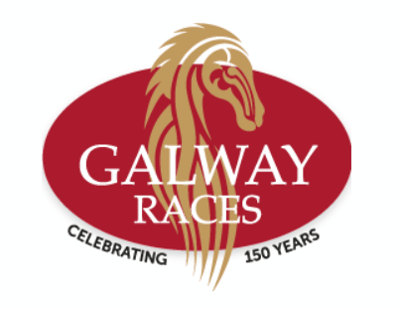
The Ballybrit racecourse in Galway’s is another popular location for Irish horse racing with events taking place there since back in 1869. The track is located just north of the city of Galway and with it sees a huge number of people attend every year. The track is set up for National Hunt racing, but it does run meeting throughout the year and even in the summer months, so there is always something happening.
The racecourse is also a hugely iconic place in Ireland because of the fact it was where Pope John Paul II celebrated mass during his visit in 1979 to over 180,000. The scenes were pretty amazing and as a result is now a pilgrimage area for many Catholics. Whilst these numbers aren’t repeated when it comes to horse racing, it’s still a popular spot on the racing calendar.
In terms of horse racing, there are two big meetings that are held every season in August and in October. The standout races from these fixtures include that of the Galway Plate, Galway Hurdle and the Ballybrit Novices Chase. The Plate is one of the biggest handicap races in Ireland and comes with a purse of €250,000, which is also the biggest at Galway racecourse. The race is front and centre and Galway Festival and has been running since 1869.
Gowran Park
Mill Rd, Gowran Demesne, Kilkenny, Ireland | Website
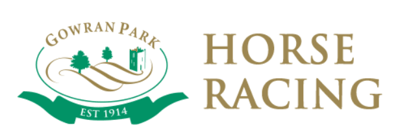
Gowran is another exciting racecourse that is based out of County Kilkenny, which is in the south of Ireland. The track has been open since 1914 and is able to boast both National Hunt and Flat racing over the course of the year.
What’s great about Gowran is that it’s able to offer a consistent base of racing throughout the year, which is something that very few courses are able to do. For example, in May they are able to host their prestige flat race in the form of the Denny Cordell Lavarack fillies Stakes and in January they host the Galmoy Hurdle, which is a Grade 2 race over hurdles. With 16 race meetings in total each year, it’s one of the more popular stops on the Irish Racing calendar.
There are two flat races that are of particular note that are run each year. The Denny Cordell is probably the biggest of the two and this is a Grade 3 race that is run over 1mile 1-furlong 100yards. The race has been running since 1996 and in that time has interestingly never seen the same horse win the race more than once. It’s purse of €72,500 makes it one of the richest races at the track.
The second is that of the Vintage Tipple Stakes, which is one of the newest races in Irish Racing. It’s only been run since 2018 but commands an impressive purse of €55,000 already and has been tipped as a future feeder race to the likes of the Irish St. Leger.
The Champions Chase in the National Hunt season see’s one of the biggest fields attend the Gowran track. The most notable previous winner of the race is that of Sizing Europe, who won the race 4 times in a row from 2011 through to 2014. It’s also worth noting that it’s last race was won as a 12 year old, making it the oldest horse to win this race.
Kilbeggan
The Racecourse, Kilbeggan, Co. Westmeath, Ireland | Website
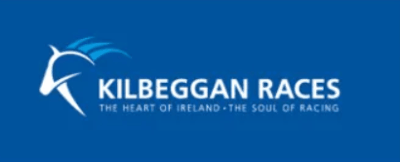
Kilbeggan is one of few racecourses in Ireland that are strictly National Hunt tracks, similar to that of Punchestown and Wexford. The tracks been open since 1840 and as a result, makes it one of the oldest racetracks in Ireland.
Kilbeggan comes with a huge community feel to it and is located in County Westmeath. But, for some of the bigger meetings they proximity of being just 1 mile from Dublin and with good access routes using the M6, means that people often travel to the track to get out of the city.
Racing is fairly limited to be honest and they only take place from May through until September. But, the limited number of meetings are really what makes the site a fans favourite as each meeting is a real event for punters within the county. The course is also nearly always at its best as a result and has won several awards for being one of the most aesthetic tracks in the country.
Killarney
52 Castle Falls, Ross Rd, Scrahane, Killarney, Co. Kerry, V93 E9X3, Ireland | Website
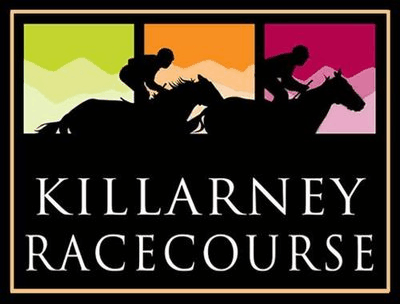
Killarney racecourse can be found in County Kerry and is able to offer both National Hunt and flat racing. In fact, the course is pretty unique in that they often offer races from the two disciplines in the same meeting, meaning you get a real flavour for all types of horse racing when visiting the track.
They don’t have a huge number of meeting however, with just a handful each year. But, the meetings often last between 3 to 5 days throughout the summer months, meaning that there is plenty going on for each.
The biggest draw for the course is the location. It’s pretty remote to be fair, being on the south-west corner of Ireland, but offers some incredible views and mountainous backdrops as a result. A lake neighbours the course which is at the bottom of several steep valleys, again adding to the drama of the race track.
Whilst a small course in terms of meetings, the track itself is one of the tougher ones in the country. It’s left handed to start with and covers 1 mile 2 furlongs in total length. But, the home straight is very undulating and with it sees a huge pull up to the finishing line that horses need to find that extra bit of strength and navigate up. Horses who are new to the track often get caught out here, even over shorter races, so a bit of local knowledge is always a bonus when punting at Killarney.
Laytown
Strand Rd, Ninch, Laytown, Co. Meath, Ireland | Website

There are few more unique racecourses in the world than Laytown, which is based in County Meath, Ireland. What makes the site unique is that the track is on a local beach and the horses run on the sand. It’s a magnificent site to see and certainly offers a different dimension to what we know as a common racetrack.
The course definitely takes centre stage here and is much a tourist attraction as anything else. The course lies just 30 or so miles north of Dublin, which makes it massively popular for people commuting out of the city and looking to experience one of the most unique courses in the world. Although, racing is dependent on the tide! There is little in the way or grandstands and instead race fans just land up on the grass banks that run along the beach.
The track measures a 1 mile straight and is almost dead straight and dead flat, which one of the biggest lures for trainers to get a gauge on where their horses currently are. Racing has been taking place at the beach since 1868 which makes it the oldest beach-based racecourses in the world.
Leopardstown
Foxrock, Dublin 18, D18 C9V6, Ireland | Website

Leopardstown is not only one of Ireland’s biggest horse racing tracks, but also one of the biggest in the world. The track is able to see masses of people flock to the course every year and due to it being located just 8km south of Dublin, it means that it’s highly accessible and often thought of as the home of Irish racing.
The track, like so many in Ireland, is able to offer both National Hunt and flat racing throughout the year. Switching from flat in the summer months to National hunt in the winter months. The course was built by Captain George Quin and actually modelled on Sandown Park, which is based in England. Doors first opened in 1888 and in total, hosts 22 meetings per year.
The course is probably best known for its National Hunt racing over its flat racing. It hosts an incredible 13 Group 1 races throughout the year, which is one of the biggest numbers for National Hunt racing anywhere in Ireland or the UK.
The February meeting is one that particularly stands out as on a single day racing the course hosts 4 Group 1 races. These include the Irish Gold cup, Dr P.J Moriarty Novices Chase, Deloitte Novice Hurdle and the Spring Juvenile Hurdle. The Christmas Chase held in December is probably the next most notable of the National Hunt races, which has included famous winners such as Don Poli, Tidal Bay, Synchronised, Denman, Beef or Salmon and Rince Ri, to name just a few.
Flat Racing all works up to the September meeting at Leopardstown with two important Group 1 races. The first is that of the Irish Champion Stakes and with a purse of €1,250,000 up for grabs, makes it one of the richest races in the country. Winners have included the likes of Sea The Stars, Dylan Thomas, Giant’s Causeway and New Approach. The second is the Marton Stakes, with a purse of €350,000.
Limerick
Greenmount Park, Patrickswell, Co. Limerick, V94 K858, Ireland | Website

Whilst Limerick has a strong history with horse racing dating back to the 1790’s, the current course was only opened in 2001 and at the time was the first new racecourse to be opened in the country for over 50 years, such is the rarity of the occasion. It’s new set up means that it’s able to offer both National Hunt and Flat racing, much like the majority of tracks in Ireland.
The course also been able to keep the races that have been the pillar of success over so many years. It’s probably fair to say that National Hunt racing has the stronger range of races, but there is still a good number of flat races as well.
The Dorans Pride Novice Hurdle is actually one of the newly integrated races that’s come about since the new course opened. It’s been running since 2003 and takes place in their December meeting, usually between Christmas and New Year. The race was upgraded from a Group 3 to a Group 2 in 2015, mainly down to the fact that Faugheen and Martello Tower had won in the two previous years, with Faugheen going on to win 12 majors and voted Irish Horse of the Year in 2015.
Other notable races include the Dawn Run Novices Chase, Limerick EBF Mares Novices Hurdle, Fergus O’Toole Memorial Novice Hurdle and the Greenmount Park Novice Chase, all of which are either Group 2 or Group 3 races.
Listowel
Tralee Road, Co. Kerry, Ireland | Website
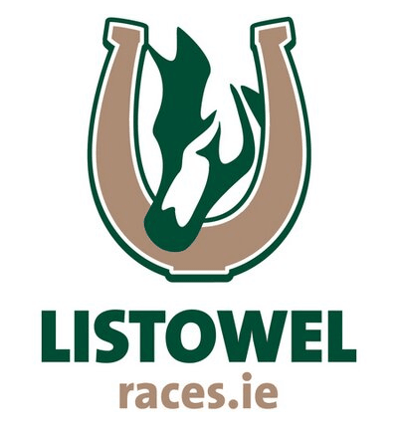
Listowel racecourse is one of the oldest in Ireland and has been about since 1858. The course is very much what’s referred to as a “proper” racetrack in that it’s not changed an awful lot over the years and till represents the roots and heritage that many racegoers have become so accustomed to in Ireland.
The location of Listowel in County Kerry means it’s a little more out the way than a lot of Irish tracks, resulting in a big emphasis from the local, community to get on board and support racing where possible. The Harvest Festival, which is Listowel’s major race meeting is the epitome of this and last 7 days in September taking on the National Hunt course. In total there are 9 meetings that take place at the track, which isn’t all that many, but most meetings do include several day’s worth of racing.
The biggest race at the track comes in the form of the Guinness Kerry National. The race is run as part of the Harvest Festival and is one that is well supported from horses all over Ireland and the UK. The purse of €160,000 makes it highly lucrative and as a result of the 3-mile track means that it’s a great platform for younger horses that could do well at races such as the Irish Grand National and the Grand National.
Naas
Tipper Rd, Tipper West, Naas, Co. Kildare, Ireland | Website
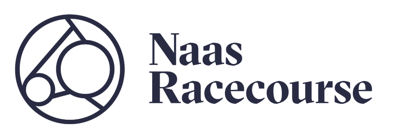
Naas racecourse is another that has become highly popular in recent years with an influx of higher rated racing taking place throughout the year. Like so many Irish courses, they entertain both flat and National Hunt racing over the course of the years, with a strong showing in both formats.
The course is located in County Kildare and is just 18 miles south of Dublin, offering up a massive catchment area for potential victors with regular trains entering the local town. Racing in Naas has taken place since 1922 with the first meeting at the current racecourse coming about in 1924, ironically making it one of the “newer” courses in the country, even though it’s almost 100 years old!
The course is able to boast a strong range of races held throughout the year and with it includes several Grade 2 and 3 races respectively. When it comes to the flat racing the Blue Wind Stakes and the Fillies’ Sprint Stakes are the two standout races with €75,000 and €65,000 purses. These races have seen the likes of Damson, Rumpelstiltskin, Lille Langry, Sky Lantern and Alpha Centurion all see success.
The National hunt race of note include the Slaney Novice Hurdle, Woodlands Park 100 Club Novice Chase, Limestone Lad Hurdle (famously won 3 times by the horse sin 2000, 2001, and 2002), Newlands Chase, Kilcock Novice Chase and the Fishery Lane Hurdle, to name just a few.
Navan
Proudstown Rd, Navan, Co. Meath, C15 A623, Ireland | Website
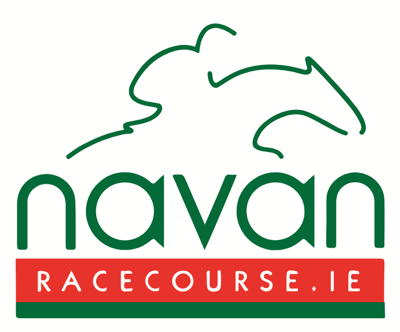
Navan racecourse is one of a plethora of tracks that are located within 50 miles of the country’s capital Dublin. It’s very much thought to be the most densely populated area of horse racing tracks in the country and as a result, each course needs to put that bit more effort to ensure that visitors choose their track over the competitions.
Whilst Navan is definitely one of the better-looking tracks, especially as it has a stunning 9-hole golf course in the middle of the one and half mile track, it’s also got the calibre of racing to back it up. The course opens itself up to both national Hunt and flat racing throughout the year.
The standout race of the year comes in the form of the Navan Novice Hurdle, which is run in the middle of December and the winter meeting. The race is contested by some of the seasons top novice hurdlers and as a result, is now a Group 1 race. The race brings in some of the biggest names in the industry, with Ruby Walsh winning a record 4 times and trainer Willie Mullins winning 6 times.
A host of Group 2 and Group 3 races are also run throughout the year, with the biggest being that of the Fortria Chase. This race has been won by the likes of Big Zeb, Moscow Flyer and Native Upmanship, to name just a few. A notable mention must go to that of Limestone Lad who’s seen massive success as the course, winning multiple Tara Hurdle’s and Boyne Hurdle’s as part of an illustrious career.
Punchestown
Punchestown, Naas, Co. Kildare, Ireland | Website

Punchestown is the most iconic National Hunt racecourse in Ireland. It’s been open since 1875 and in that time has enjoyed some of the biggest races and some of the most memorable moments to have taken place in Irish Racing.
It’s quite unique in that it’s one of just three racecourses that are only National Hunt courses, including Kilbeggen and Wexford. It’s by far the biggest of the three though and not only is able to enjoy huge horse racing events, but over the years has been able to host massive music events, such as the Oxegen Festival and bands such as AC/DC, Bon Jovi and Eminem, to name just a few.
But, it’s horse racing that is the biggest attraction and with it the calibre of National Hunt racing is pretty much unrivalled in the country. The course plays host to an incredible 14 Group 1 races and with each has a strong history. But, there are 4 of those that play a standout role which come in the form of the Champion Chase, Gold cup, Champion Stayers Hurdle and the Champion Hurdle.
Each of these race some with a €275,000 prize pool, which is about as big as you will find from National Hunt racing in Ireland. Over the years some of the biggest names in racing history have won, including Moscow Flyer, Big Zeb, Sizing Europe, Sprinter Sacre, Un de Sceaux, Sizing John, Don Cossack, War of Attraction, Quevega, Jezki, Limestone Lad, Hurricane Fly and Istrabraq.
Roscommon
Racecourse Rd, Carrownabrickna, Lenabane, Co. Roscommon, F42 V052, Ireland | Website

Roscommon is a smaller racecourse situated in County Roscommon, which is about 76km north of Galway towards the West of Ireland. It offers racing from May through September, so in reality, has a pretty short window compared to a lot of the bigger sites.
As with so many courses in Ireland, both National Hunt racing and flat racing are run there over the summer months, with around 8 meetings in total. The track plays host to a tricky little 1mile 2 furlong reckoning and offers quite a steep undulation in places, especially towards the end of the start finish line, often something that catches the horses out, especially with the shorter flat races that they run.
The site has been open since 1837, but the first official race wasn’t noted until 1885 and apart from a 12-year hiatus between 1936 and 1948 for the war, racing has taken place there ever since.
The biggest race of the year is that of the Kilbegnet Novices Chase, which is a Grade 3 race and run over 2 mules. It takes place in the final meeting of the year in September and is often seen as the finale before the seasons track use comes to an end. The Lenebane Stakes is probably the biggest flat race that’s on offer, which is run over 1 mile and 3 furlongs and comes with a purse of €40,000.
Sligo
16 Cleveragh Rd, Cleaveragh Demesne, Sligo, F91 T2VC, Ireland | Website
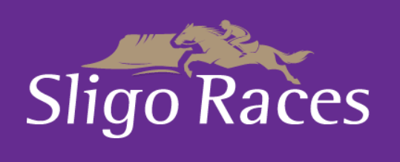
Sligo has been a part of the Irish racing scene since 1781 and with it is one of the country’s oldest tracks. Based on the west coast of Ireland, Sligo is quite a small town with just 20,000 residents, but it’s amenities such as the racecourse that plays a huge role in the town’s makeup and with it is well supported by the locals.
The course gets around 8 race meetings per year but does include a good mix of both National Hunt and flat racing to boot. Whilst small, the location of the racecourse means that it offers stunning views and mountainous backdrops. Plans are also set afoot to offer a considerable expansion to the course, with a new grandstand as well as hospitality and catering facilities to give an added injection.
Thurles
Racecourse, Thurles, Co. Tipperary, Ireland | Website
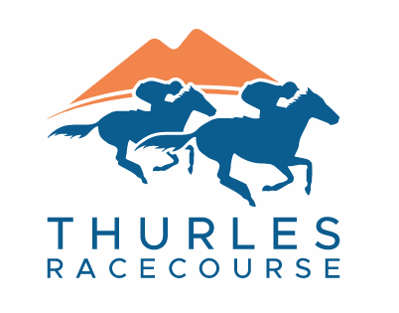
Thurles racetrack is situated in the county of Tipperary, which is in the south of Ireland. The course is set up to offer both National hunt and Flat racing throughout the year and with it is able to provide a good number of solid races in that period as well.
Racing at the site dates back to 1732, which makes it one of the oldest racing sites in Ireland to date. The course itself measures one and a quarter mile in total length but can accommodate two tracks for both flat racing and steeplechasing where needed. It’s actually a pretty tough track for the horses as well, with a steep uphill finish to try and negotiate.
The track plays host to a number of graded races, which are all National Hunt races. These include the Kinloch Brae Chase, Coolmare Mares Novices Chase, Michael Purcell Memorial Novices Hurdle and the John Meagher Chase. The biggest purse is that of the Mares Novices Chase, which comes with €57,500 in total prize pool and has been won by esteemed jockeys such as Ruby Walsh, Davy Russell, Barry Geraghty and Tony McCoy, to name just a few.
Tramore
Graun House, Crobally Upper, Tramore, Co. Waterford, X91 XP29, Ireland | Website
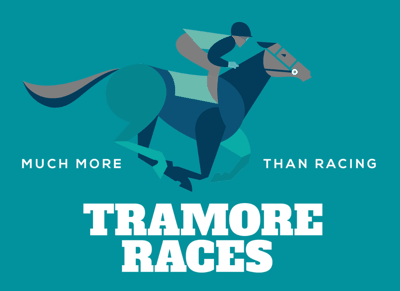
Racing on the south coast of Ireland is pretty limited, so flying the flag for this part of the world is that of Tramore, the southernmost racecourse in Ireland. Racing at the site acutely used to take place on the beach and was one of just a handful of racecourses in Ireland to work this way.
The current site is set a little more in land and with it offers a more traditional racing experience for this angelic seaside town. The Grade 2 track has seen racing take place here since 1912, but it was raced on the beach as early as 1785 before moving. It’s a small one mile track but has had an investment of £5million made by a local consortium in 2007 to upgrade facilities and cover ever-increasing costs at the track.
There are 11 meetings that are held at Tramore each year and with it the major meeting runs from a Thursday until a Sunday. What’s interesting about the meeting is that both flat and National hunt racing occur on each day, which is much more common in Ireland than it is in other parts of the world.
Wexford
Bettyville, Newtown Rd, Carricklawn, Wexford, Ireland | Website

A part of the south east coast line, Wexford is another stunning little racecourse that has seen huge improvements both in terms of facilities and racing over the last few years. Racing at the site has been about since the 1870’s, but the current course was first opened in 1951, which actually makes it fairly new in terms of Irish racecourses.
The site is able to host over 17,000 spectators, which given its size, is quite surprising. But, the sea views that you can enjoy from the course and the fact that they have left the majority of it free from modernisation, makes it a fantastic day out.
Whilst the course was originally set up as both national hunt and flat racing circuits, in 2016 the decision to remove flat racing was taken and in turn are now one of just three exclusive National Hunt tracks in Ireland, along with Kilbeggen and Punchestown.
The removal of flat racing also meant that they were able to switch the course from a right hander layout to a left hander layout, which works much better with the undulations that involved with the track.
